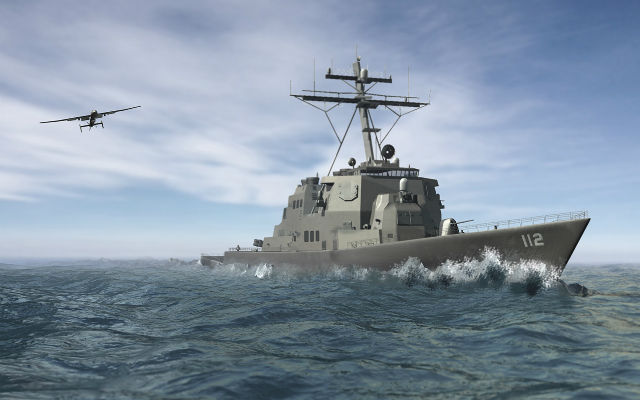Northrop Grumman will demonstrate that an MQ-9 Reaper-sized unmanned air vehicle (UAV) can operate at sea from ships smaller than an aircraft carrier under a $93 million contract awarded on 24 December.
The Defense Advanced Research Projects Agency (DARPA) eliminated AeroVironment last September as Northrop’s only remaining competitor for the Tactically Exploited Reconnaissance Node (TERN) programme. But Northrop’s role in designing, developing and demonstrating the medium-altitude, long-endurance UAV was not confirmed until DARPA announced the contract award.
The terms of the contract require Northrop to contribute $39 million, raising the overall cost of the demonstration programme to $132 million.

DARPA
On 11 December, Northrop revealed a model of the company’s secretive design to a handful of journalists touring the company’s El Segundo, California, research and manufacturing facilities. The model showed Northrop had selected a flying-wing tailsitter design with a nose-mounted counter-rotating propeller system.
The 12.2m (40ft)-span vehicle appeared reminiscent of the tail-sitting Lockheed XFV-1 and Convair XFY-1 Pogo fighters research projects of the 1950s. But Northrop’s TERN differed in design with the absence of a fuselage and a much larger set of counter-rotating propellers that measured as much as one-third of the wingspan.
The model also showed that Northrop envisioned mounting weapons and other stores externally on hard points under the wing.
DARPA launched the TERN programme to solve a capability problem for the US Navy. The service regularly operates small, tactical unmanned air systems, such as the Boeing/Insitu Integrator from frigate-class ships, using a catapult to launch the aircraft and a crane to recover it. But carrying payloads larger than about 30kg required using an unmanned helicopter, such as the Northrop MQ-8C Fire Scout, which can carry heavier loads but lacks the range and endurance of a General Atomics Aeronautics Systems MQ-9.
The TERN attempts to bridge that gap with a vehicle that can carry a 272kg payload on missions up to 900nm (1,670km).
The Phase III contract awarded to Northrop on 24 December requires the company to build a demonstrator, perform ground testing and demonstrate the aircraft at sea.
Source: FlightGlobal.com











































